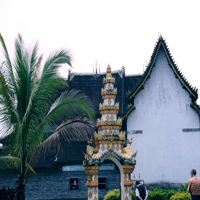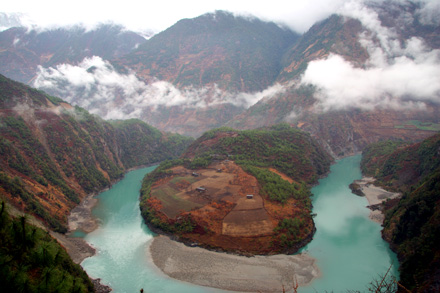Xishuangbanna
Overview
-
Close to the border of Myanmar and Thailand, this subtropical region is home to the Dai ethnic people. Lowland rice fields along the banks of a broad Mekong River are divided by rolling hills covered in virgin rainforest and interspersed with isolated communities of Dai, Hani and Bulang minority peoples. It is an ideal retreat for the winter when most of China is cold. Visit authentic villages of three minorities and their homes and stroll around the local market. Distinctive ethnic people in colorful costumes, various local food and products and a tea plantation will make your trip truly memorable.On the New Year’s Day for the Dai ethnic minority, around the 13th and 15th April, the Water-sprinkling Festival takes place. It is the most important and grandest festival during the whole year. In addition, the festivals of the Hani, Jino and Yao ethnic minorities are also delightful part of Xishuangbanna's ethnic customs.
Xishuangbanna has the only tropical forest nature reserve in China. The great biological diversity in the virgin forest is surprising. Furthermore, Xishuangbanna is far away from central China. Religiously it is mainly affected by Hinayana Buddhism of Southeast Asia. The Manfeilong Buddhist Pagoda is the quintessence of Hinayana Buddhist architecture.
Best time to visit
-
Best time to visit Xishuangbanna will be from October to the next June.
Summer is too hot with too much rain.Annual climate averages
21°C
How to get there?
What to see
-
The Tropical Plant Research Institute, surrounded by rivers and mountains and containing a wealth of rare plants, trees and flowers, is one of the major attractions of Xishuangbanna.
The picturesque Mandian Waterfall is set amongst rainforest in a national park north west of Jinghong.
Southeast of Jinghong on the Mekong river lies Ganlanba, a historic Dai settlement. You will find Dai villages, temples and rice fields and have the possibility to discover the five local villages of Manting, Manchunman, Man’ga, Manjiang and Manzha.
At the juncture of the western and eastern part of the Menyang naureal reserve live most of the wild elephants, which are symbol of good luck, might and longevity to the Dai people. The best time to visit Wild Elephant Valley and see the impressive animals is at dawn or dusk. It is locally known as the “kingdom of elephants”.
The Manfeilong Pagoda was built in year 1024. Situated on the top of a hill near Menglong it’s a famed stupa complex in Xishuangbanna.
Situated on a slope in Jingzhen Village of Menghai, the Octagonal Pavilion represents the superb caftmanship of the Dai Minority. It was built in 1707 and originally used as a Buddhist meeting chamber.
Useful Information
-
- Book air tickets ahead of time as Xishuangbanna is very popular.
- Bring an umbrella/raincoat, insect repellant and sun-screen with you.
- Make sure you bring some nice and cool T-shirt and shorts, also a pair of slipper. Wearing sport shoes is unbearable there. However if you are are going hiking we recommend bringing them along!
More Information
-
People
There are 44 ethnic groups living in Xishuangbanna, while Dai and Hani people make up the largest part of the population.Festivals
The most famous festival in Xishuangbanna is the Water-splashing festival held by Dai people during their special new year. In recent years this festival has become very touristyFood
Situated in tropical area, the flavor of food in Xishuangbanna is either sour or spicy, featured with all kinds of minorities’style.Souvenirs
Bags and brocade made by Dai people, woodcarvings, and also red beans (love beans), which is a great gift for lovers.



 Off-the-Beaten Path Dali, Lijiang & Shangri-La of Yunnan
Off-the-Beaten Path Dali, Lijiang & Shangri-La of Yunnan Western Yunnan's Tengchong - Volcanoes & Hot Springs
Western Yunnan's Tengchong - Volcanoes & Hot Springs Off-the-beaten Dali -Rural life and Minorities of Yunnan
Off-the-beaten Dali -Rural life and Minorities of Yunnan Nujiang Gorge in Northwest Yunnan
Nujiang Gorge in Northwest Yunnan Yunnan's Yuanyang (Hani Rice Terrace) & Tropical Xishuangbanna
Yunnan's Yuanyang (Hani Rice Terrace) & Tropical Xishuangbanna



